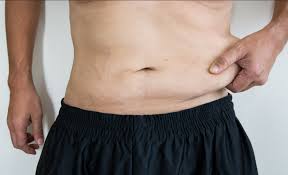Exploring Different Types of Tummy Tuck Surgery Clinic In Oman and Their Benefits
Introduction
A tummy tuck, or abdominoplasty, is a popular cosmetic surgical procedure designed to improve the appearance of the abdomen by removing excess skin and fat and tightening the underlying muscles. This TUMMY TUCK SURGERY Clinic in Oman is particularly sought after by individuals who have experienced significant weight loss, pregnancy, or aging, leading to loose or sagging skin around the midsection. There are various types of tummy tuck surgeries, each tailored to meet specific patient needs and desired outcomes. This article explores the different types of tummy tuck surgeries and their respective benefits.

Types of Tummy Tuck Surgeries
- Full Tummy Tuck
- Mini Tummy Tuck
- Extended Tummy Tuck
- Fleur-de-Lis Tummy Tuck
- Reverse Tummy Tuck
Full Tummy Tuck
Introduction: The full tummy tuck is the most common and comprehensive form of abdominoplasty. It addresses the entire abdominal area, both above and below the navel.
Process:
- An incision is made from hip to hip, just above the pubic area.
- A second incision is made around the navel to free it from the surrounding tissue.
- The skin is separated from the abdominal wall to reveal the muscles.
- The surgeon tightens and sutures the abdominal muscles.
- Excess skin is removed, and the remaining skin is pulled down and sutured into place.
- A new opening for the navel is created.
Benefits:
- Significant improvement in abdominal contour.
- Tightening of the abdominal muscles for a firmer abdomen.
- Removal of a large amount of excess skin and fat.
Mini Tummy Tuck
Introduction: The mini tummy tuck, or partial abdominoplasty, is ideal for individuals with less excess skin and fat confined to the lower abdomen.
Process:
- A shorter incision is made above the pubic area.
- The skin is separated from the abdominal wall below the navel.
- The lower abdominal muscles are tightened.
- Excess skin is removed, and the remaining skin is pulled down and sutured.
- The navel is typically not repositioned.
Benefits:
- Less invasive with a shorter recovery time.
- Smaller scar compared to a full tummy tuck.
- Effective for patients with minor abdominal sagging.
Extended Tummy Tuck
Introduction: The extended tummy tuck is designed for individuals with a significant amount of excess skin and fat, extending to the flanks or sides of the abdomen.
Process:
- An incision is made from hip to hip, extending to the back of the hips.
- The abdominal muscles are tightened.
- Excess skin and fat are removed from the abdomen and flanks.
- The remaining skin is pulled down and sutured.
- The navel is repositioned.
Benefits:
- Comprehensive contouring of the abdomen and flanks.
- Suitable for patients who have experienced significant weight loss.
- Provides a smoother, more toned appearance.
Fleur-de-Lis Tummy Tuck
Introduction: The Fleur-de-Lis tummy tuck is for patients with extensive skin laxity in both the vertical and horizontal directions, often after massive weight loss.
Process:
- A vertical incision is made along the midline of the abdomen, in addition to the horizontal incision.
- The abdominal muscles are tightened.
- Excess skin is removed from both the vertical and horizontal axes.
- The remaining skin is repositioned and sutured.
- The navel is repositioned.
Benefits:
- Effective for removing a large amount of excess skin.
- Results in a more defined waistline and improved abdominal contour.
- Suitable for patients with significant skin laxity.
Reverse Tummy Tuck
Introduction: The reverse tummy tuck is less common and targets the upper abdomen, typically for patients with sagging skin above the navel.
Process:
- Incisions are made along the lower breast crease.
- The skin is pulled upwards, and excess skin is removed.
- The remaining skin is sutured into place.
Benefits:
- Specifically addresses upper abdominal sagging.
- Can be combined with breast surgery for comprehensive upper body contouring.
- Minimal scarring as the incisions are hidden under the breast crease.
Characteristics of Tummy Tuck Surgeries
- Personalization: Each type of tummy tuck is tailored to the patient's unique anatomy and aesthetic goals.
- Incision Placement: Incisions vary in length and location, depending on the type of tummy tuck and the amount of excess skin.
- Recovery Time: Recovery times can range from a few weeks to a few months, with full tummy tucks generally requiring longer recovery periods.
- Scarring: While scarring is inevitable, most incisions are strategically placed to be as inconspicuous as possible, often hidden under clothing or along natural creases.
Conclusion
Tummy tuck surgeries offer transformative benefits for individuals seeking to improve their abdominal contour and overall body image. Understanding the different types of tummy tucks and their specific benefits allows patients to make informed decisions in collaboration with their surgeons. Whether opting for a full, mini, extended, Fleur-de-Lis, or reverse tummy tuck, each procedure provides unique advantages tailored to meet diverse patient needs. As with any surgical procedure, it's essential to consult with a board-certified plastic surgeon to determine the most appropriate approach based on individual goals and medical conditions.
